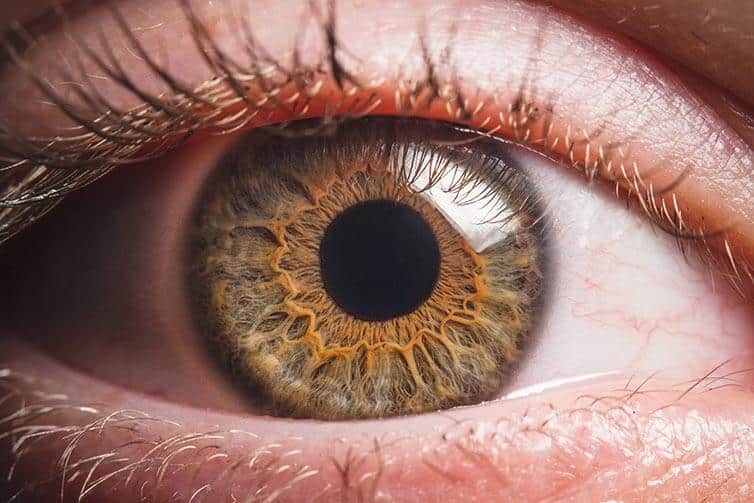DSEK (Descemet’s Stripping Endothelial Keratoplasty)

What Is the Goal of DSEK Surgery?
DSEK is intended to transplant a healthy endothelial cell layer that will pump the fluid out of the cornea. It’s expected to restore corneal clarity and improve vision. This surgery corrects corneal endothelium failure, but it is not able to correct corneal scarring, thinning, or surface irregularity.
A corneal transplant is known as penetrating keratoplasty. This becomes necessary when the curvature of the cornea, the transparent covering on the eye’s anterior wall, is too steep or too flat to be treated with other methods.
Penetrating keratoplasty is the traditional method for removing and replacing the cornea with donor tissue.
What is penetrating keratoplasty?
Penetrating keratoplasty removes and replaces the entire cornea. This is also known as full-thickness replacement, when it is compared with other methods that have been developed more recently that don’t replace the entire cornea, but portions of it.
What Are the Advantages of Using DSEK Rather than Full Cornea Replacement?
This endothelial replacement, rather than the entire cornea, has a number of benefits for the patient:
- The eye surface is kept intact because only the diseased back layer of the patient’s cornea is removed. This keeps the cornea stronger and more resistant to injury and infection.
- There is minimal change in refraction and visual acuity because only the endothelial layer is replaced, rather than the entire cornea.
- Problems with sutures are significantly reduced or eliminated.
- Visual recovery is significantly faster and more dependable.
- Fewer risk factors are involved.
In contrast to DSEK surgery, a conventional corneal transplant requires 16 sutures and a prolonged recovery time. Plus, many patients report significant post-operative astigmatism after their transplant surgery. Full recovery can take from one to two years.
Am I the Right Candidate for a DSEK Procedure?
Not all patients with corneal pathology are candidates for DSEK with Dr. Groat. Candidacy depends on the patient’s decreased vision related to corneal swelling from poorly functioning endothelium. This usually comes as a result of Fuchs’ Endothelial Dystrophy, bullous keratopathy, iridocorneal endothelial syndrome, and other endothelial disorders.
How Long Does a DSEK Procedure Take?
A DSEK procedure is done with the patient under local anesthesia. The procedure takes just 45 minutes, about half the time needed for a traditional cornea transplant.
Hear From Dr. Groat’s Patients!
“Dr. Groat’s excellent care and superb surgical skills cured my deteriorating eyesight. Cornea layer transplants and new lenses for both eyes have been incredible. I am grateful for his work and the professionalism of his staff, and highly recommend their services!”
– DAVID K.
What Should I Expect After My DSEK Corneal Transplant?
After your surgery, you will have a patch over your eye. You will rest for the remainder of the day. For as much of this time as is possible, you’ll need to lie flat on your back looking directly upward. This position keeps the air bubble against the corneal transplant. The procedure requires only a tiny incision that requires just a single suture (often not even a single suture is required). You will receive several drops to prevent infection, and to help the eye heal comfortably.
After just 48 hours there will only be limited restrictions to your activities. You’ll need to refrain from bending below the waist for three weeks following your surgery. Heavy lifting needs to wait three weeks, as well. You can usually drive within one week.
Your vision will be much better within one week, with 80 percent of your healing complete in one month. The remaining improvement will come over the next four to six months.
What Will My Vision Improvement Be With DSEK Surgery?
Your vision will be blurry after surgery due to swelling and the air bubble used to keep the transplant in place. The air bubble will be absorbed sometime within the first week, but swelling may persist for a month or two. As the swelling decreases, your vision will continue to improve. You may need new glasses while your eye is healing, but your vision will continue to improve. Patients without other eye problems usually achieve vision of 20/30 or better within a couple of months. Of course, this isn’t an absolute, and results can vary with different patients.
Is There a Risk of Rejection with DSEK?
You will use anti-rejection eye drops for a number of years after your DSEK procedure. The risk of rejection with DSEK is around 12 percent, compared to a 20 percent risk with full-thickness corneal transplants.
Schedule a Consultation
Dr. Groat is an expert corneal surgeon who employs superlative experience and all the latest technologies available to provide you with the best cornea transplant treatment available anywhere. When you need surgery, you can trust Cape Fear Cataract & Cornea to develop the best customized surgical plan for you after discussing your needs and options. To schedule a consultation with our practice, call us at 910-769-4590 or click the button below to contact us online.
Request an Appointment“Excellent physician! I feel very comfortable with him taking care of my eyes. He is a honest physician. Staff and office is wonderful! I would highly recommend him for all your eye needs!”
“I moved to Wilmington 4 years ago and found Dr. Groat when I had an eye emergency. His precision and efficiency is undeniable. He has an existentive medical background that made me feel comfortable + his team is so sweet, they really made my experience bearable. I’ve been going back every year for eye exams!”


